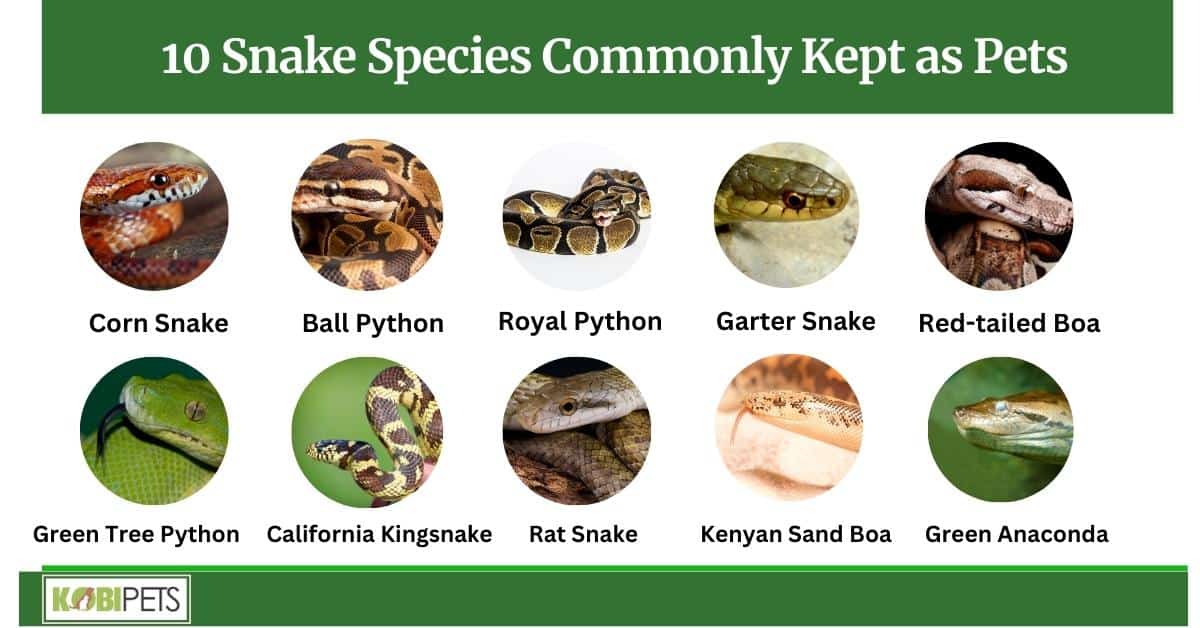
Are you thinking about getting a pet snake, but don’t know where to start? Look no further! This blog post will give you an overview of 10 commonly kept snake species and the basic care needs for each. We’ll cover everything from corn snakes to red-tailed boas, so you can make an informed decision on which breed is the best fit for you.
1. Corn Snake (Pantherophis Guttatus)
Corn snakes make ideal starter pets for novice reptile enthusiasts. They are widely available, generally docile, and have colorful markings that can be quite beautiful. Corn snakes make great pets because they can survive on a diet of frozen-thawed rodents, do well in captivity, and have easily manageable sizes.
Additionally, they have a long lifespan when compared to other species of pet snakes, often living over 15 years with proper care. Further still, when properly cared for – in an appropriately sized enclosure with proper heating and humidity levels – a corn snake has the potential to become a very interactive pet and loyal companion.
Behavior and Temperament
Corn snakes might have a distinctive yellow, orange, and reddish pattern on their bodies which makes them stand out from other snakes, but what’s more surprising is their behavior. Corn snakes have quite a pleasant temperament and are relatively calm in comparison to some other species of snake.
With regular handling, corn snakes become very docile creatures who rarely bite. They also tend to be quite active when kept in captivity and love to explore their surroundings. Overall, corn snakes make excellent companions for an owner that is willing to provide optimal care on a regular basis.
Caring Requirements
They thrive best in terrariums with a temperature gradient, preferably one that is kept between 75F-85°F during the daytime and no lower than 70°F at night. It should always have a large supply of fresh as well as clean water and a variety of hiding places since they are nocturnal animals.
In addition, corn snakes also require a 7-day feeding schedule, normally with frozen rodents that can easily be bought from most pet stores or online. A proper diet is essential for the overall health and longevity of this species, so making sure to provide it will go a long way in keeping your corn snake strong and happy for years to come.
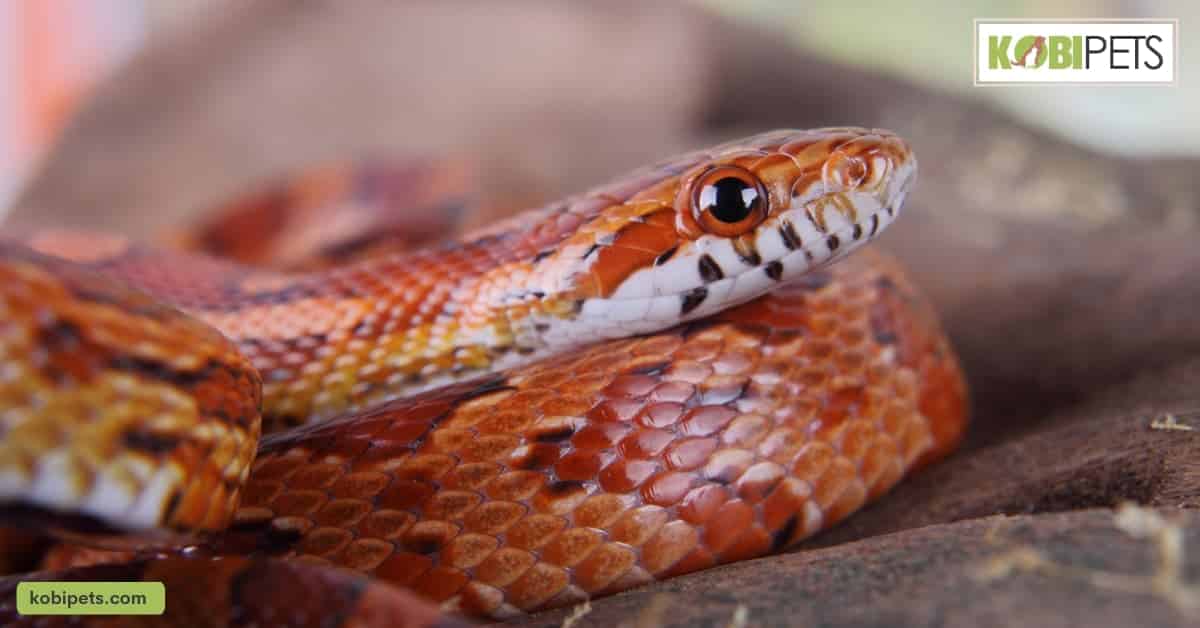
2. Ball Python (Python Regius)
Ball pythons are an ideal choice for those thinking of getting their first pet snake. They typically stay between 2-3 feet long and are very docile, making them easy to handle and care for. Their enclosure requirements are quite moderate, needing a habitat of about 20 gallons.
Requiring only a few feedings per month also makes ball python ownership very manageable. A great diet for them is mice and rats, which can be purchased from most pet stores at an affordable price.
In addition to being relatively low maintenance, ball pythons have unique personalities and add a sense of intrigue to any home environment.
Behavior and Temperament
Ball pythons are one of the most popular pets for new reptile owners and with good reason: these snakes are known for their gentle, amiable personalities. Ball pythons tend to be shy at first, but with regular handling, they become quite docile.
Their behavior can range from active to calm depending on the environment, and some can even recognize the presence of their keepers. Temperament-wise, ball pythons generally prefer to live alone and can sometimes be somewhat defensive when placed in unfamiliar situations, such as when brumating or prior to shedding their skin.
Caring Requirements
Ball pythons need a temperature-controlled enclosure with appropriate substrates, surrounded by hides and other climbing materials like vines and logs. Their diet should always include live or frozen food options like mice, rats, or lizards of an appropriate size; avoid feeding them vegetables or fruits as it can lead to potentially fatal issues.
The humidity within their enclosures must also be carefully monitored using humidifiers and substrates that absorb moisture as ball pythons can experience respiratory problems without sufficient levels of humidity.

3. Royal Python (Python Regius)
The Royal python, native to Africa and also known as the ball python, is an ideal pet snake for beginners. This species can live up to 40 years and generally remain relatively small, usually no longer than 5 feet in length.
These nonvenomous snakes are gentle and have a mild temperament, so they can be handled with care and proper knowledge for a great pet experience. Royal pythons are mainly nocturnal but will become more active during the day when provided with adequate heat and light.
The enclosure should include a secure hiding spot such as a log or box, along with plenty of substrate material such as hay or aspen shavings. With proper attention and maintenance, royal Pythons can make perfect affordable pets for novice snake owners!
Behavior and Temperament
They require a certain level of care and attention but with correct husbandry techniques make for relatively low-maintenance exotic pets. These calm-natured creatures have a very docile temperament and will rarely act out during handling.
Typically resilient to illness and injury when provided with the right home environment, they are a great choice when considering reptiles to house in your home. As such, they make great starter snakes for those new to snake-keeping alike.
Caring Requirements
While Royal Pythons can survive on smaller enclosures than many other species of snake, their housing still needs to be secure and at least 20 gallons. The enclosure should provide them with the necessary temperature gradient for their health and should include places for them to hide, such as hollow logs or rocks.
In addition, the substrate of the enclosure should be kept clean and dry and changed regularly. Royal Pythons need regular feedings of live food such as mice or pre-killed rats, but may sometimes refuse food depending on environmental cues.
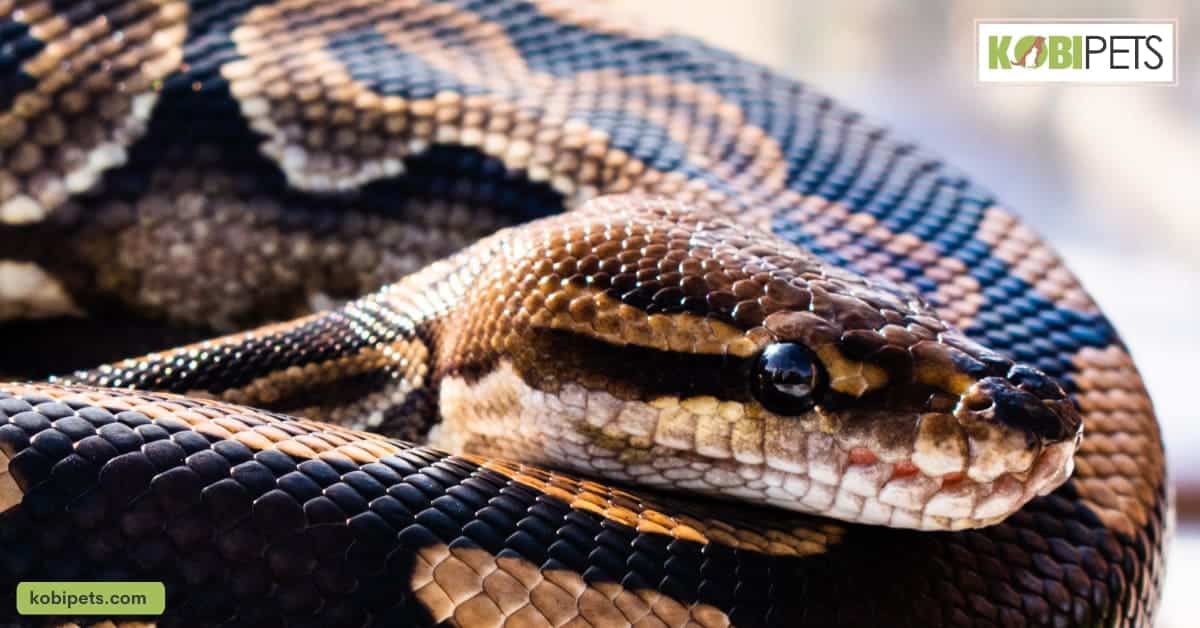
4. Garter Snake (Thamnophis Sirtalis)
Garter snakes are a smart choice for a first-time pet snake owner. These nonvenomous reptiles are widely available and can be kept in an enclosure as small as a 10-gallon aquarium with a screen top.
These cold-blooded creatures also don’t require any specialized heating or lighting equipment. They feed on live invertebrates such as worms, which can easily be purchased from most pet stores.
Garter snakes are relatively small; two adults housed together do not require an enclosure larger than 20 gallons. Furthermore, garter snakes are known to be docile and curious animals, so they adapt well to interaction with humans.
Behavior and Temperament
Garter snakes are small, active, and even-tempered reptiles that inhabit a wide variety of habitats around the world. They can be found near almost any permanent source of water, such as lakes and ponds, where they feed on frogs, salamanders, insects, and fish.
Garter snakes will also venture onto land in search of prey and may burrow into the ground for safety when feeling threatened. These reptiles are generally wary of humans but if handled gently, they can be quite docile.
Garter snakes will even show vocalizations (snake chirps) when content; however, their behavior can change drastically if not treated with respect. Therefore, it is important to always treat garter snakes with care when handling them.
Caring Requirements
Providing proper care for a garter snake requires dedication and patience. Garter snakes prefer habitats with humid air, structured hideaways, and damp substrate. Depending on the size of the enclosure, temperatures should range from 78-85°F in the daytime, allowing for a 5° drop at night.
Water should always be accessible to your pet snake, either through an easily cleanable water bowl or by misting its enclosure. Feeding varies depending on the age of your garter snake – juveniles require smaller prey like earthworms and insect larvae while adults can enjoy larger items like fish strips or small mice they can hunt down in their enclosure.
Proper ventilation as well as routine health checks and full tank cleanings are also necessary steps to ensure that your pet is healthy and happy. With the right diet, environment, and level of care, garter snakes make wonderful pets.
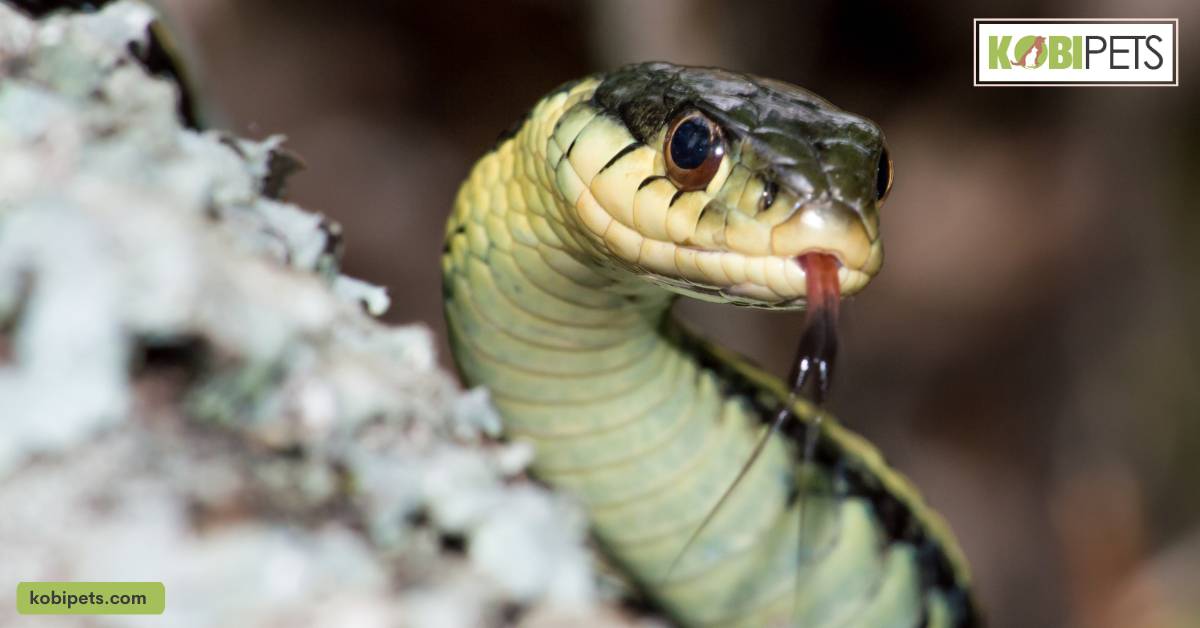
5. Red-tailed Boa (Boa Constrictor)
The red-tailed boa is an ideal starter snake for those wanting to bring a reptile into their home. This species of snake, originating from several Central and South American countries, is a resilient and docile creature perfect for those new to owning a pet snake.
The red-tailed boa has an average length of 5 to 8 feet, with females typically growing larger than males. They come in a variety of colors such as oranges, pinks, and purples.
Although it can be quite expensive up-front, the red-tailed is low maintenance and can be kept in a glass terrarium that does not need frequent cleaning or changes other than replenishing substrate when needed. With the proper care, these dependable snakes can live up to 20 years in captivity.
Behavior and Temperament
The red-tailed boa constrictor is an enormous snake, reaching lengths of up to 13 feet. Lurking in the Amazon rainforest and other tropical areas, this species is feared for its large size and strength. However, although they may look intimidating from the outside, they tend to have a gentle temperament when kept as pets.
Known as a docile animal, red-tailed boas generally get along great with their handlers and can be handled frequently without feeling overly stressed. Though they have to be alert and aware of potential threats in the wild, in captivity they usually curl up into relaxed poses when engaged with people, which indicates contentment.
If all safety precautions are taken, owners who handle these animals often find that they become trusting and even affectionate over time.
Caring Requirements
Red-tailed boas are a popular pet among reptile enthusiasts, but they require careful handling due to their size. As they can grow up to 10 feet in length, they need an ample living space that is secure and warm.
Boas must be fed mice or rats according to their age and size, and this should be done every two weeks. And while these snakes love humidity, owners must still provide a water dish to keep their scales hydrated.
Red-tailed boas also need regular cleaning of their enclosures with natural, non-toxic soaps. Furthermore, special attention needs to be paid to the temperature within the terrarium and it should range between 80-90°F in order for them to thrive.
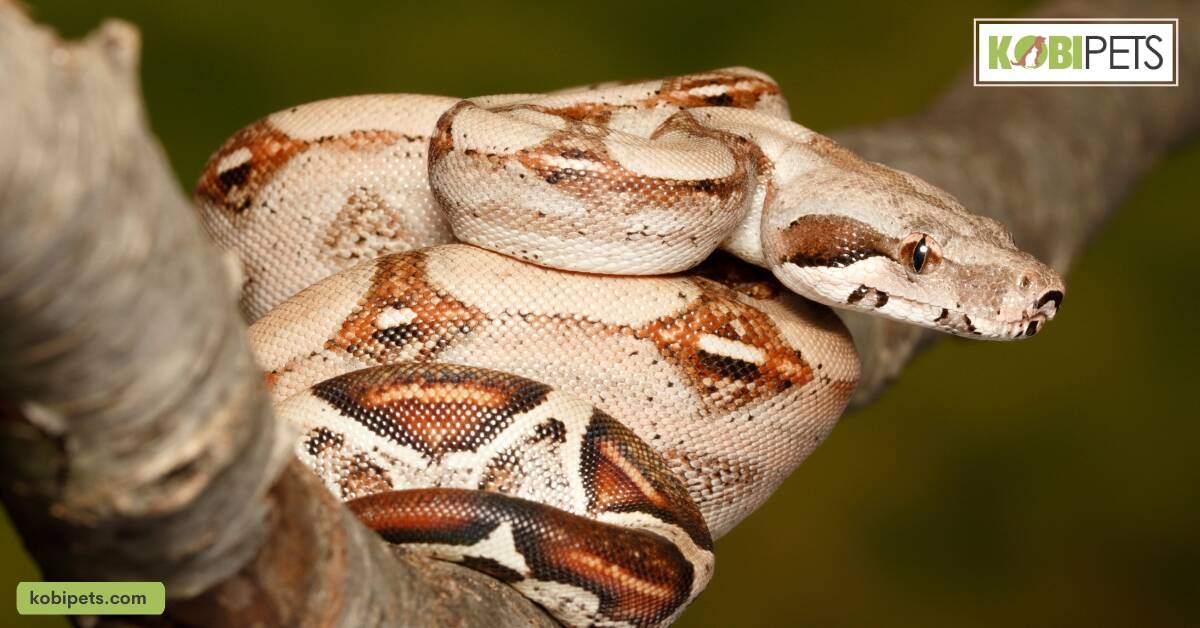
6. Green Tree Python (Morelia Viridis)
For those looking for a beginner pet snake, the Green Tree python is a great option. As its name suggests, these nonvenomous pythons originate from Australia and New Guinea and feature vivid, eye-catching colors of green and yellow.
They can get up to 6 feet long so they don’t require too much room and are relatively easy to care for. Additionally, they are known to be quite docile and make excellent display pets as they aren’t overly active.
Green Tree pythons do need regular handling though as it helps them become tamer and will also revive their appetite when necessary.
Behavior and Temperament
Green tree pythons are incredibly placid animals when handled appropriately and enjoy interacting with their handlers. They can be quite shy and timid initially but will immediately begin to establish trust with their owners.
When threatened or scared, these snakes may suddenly rear up into an ‘S’-shape defensive posture and hiss loudly. Otherwise, they remain relatively quiet reptiles which make excellent pets due to their gentle nature and vibrant appearance.
Caring Requirements
Housing should include a secure enclosure and a clean environment. With enough hiding places, branches or vines, and room to move, they will feel safe and thrive. UVB lighting is highly recommended; 12 hours during the day, and 12 hours at night.
Substrate such as fresh coco fiber also helps keep humidity levels high (minimum 50%). Feeding should occur every 7-10 days, with a variety of appropriately sized food sources – mice and rats making up the majority of their diet.
They are not social creatures so handling should only be kept to a minimum – a few times per month — and when necessary should be done very gently by experienced reptile owners.
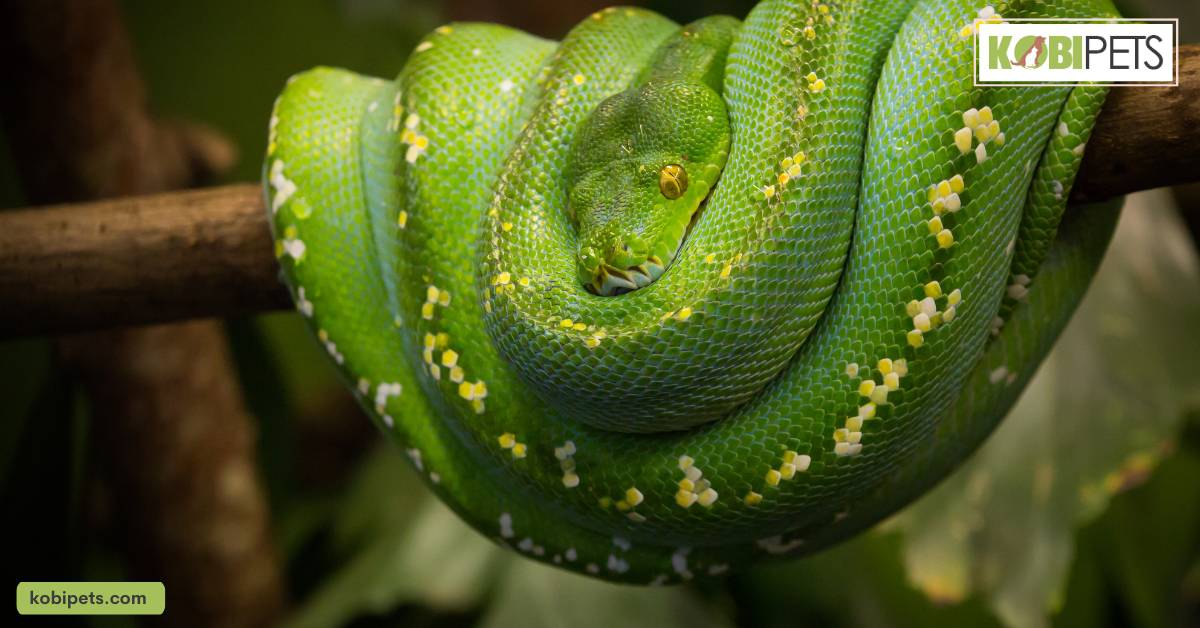
7. California Kingsnake (Lampropeltis Getula Californiae)
The California Kingsnake is an excellent choice if you are looking to purchase a beginner pet snake. This species of Kingsnake is hardy and comes in a variety of colors and unique markings, making them pleasing to the eye.
They are relatively small, reaching only around two and a half feet in length when fully grown and because of their generally docile nature, they are great for novice keepers. As a constrictor, California Kingsnakes feed primarily on rodents.
They do not require specialized heating or lighting sources beyond what would be found in a home environment and can go years without needing special attention from the owner aside from occasional feeding and general habitat maintenance.
Behavior and Temperament
When it comes to California Kingsnakes, temperament is a bit of a mixed bag. They can be quite shy and reclusive, as well as calm and docile—definitely not the best snake for someone looking for an interactive pet.
On the other hand, they are known to be fairly predictable in terms of behavior, so with the right habitat and care they can often be handled without issue. Overall, these snakes tend to be more interested in hiding and tending to their own needs than interacting with humans or other animals; they do not typically show great agility or speed when moved outside their enclosure.
Caring Requirements
As a pet, they can live happily indoors as long as their needs are met and properly cared for. These snakes require a captive environment with plenty of spots to hide and feel safe, as well as regularly cleaned substrate in the habitat and temperatures between 72-85°F, making heating lamps and thermostats necessary purchases if placed in captivity.
Moreover, these critters should be fed two-three small mice twice a week and their water should be changed regularly. With proper care and attention, California kingsnakes make incredibly charming companions!
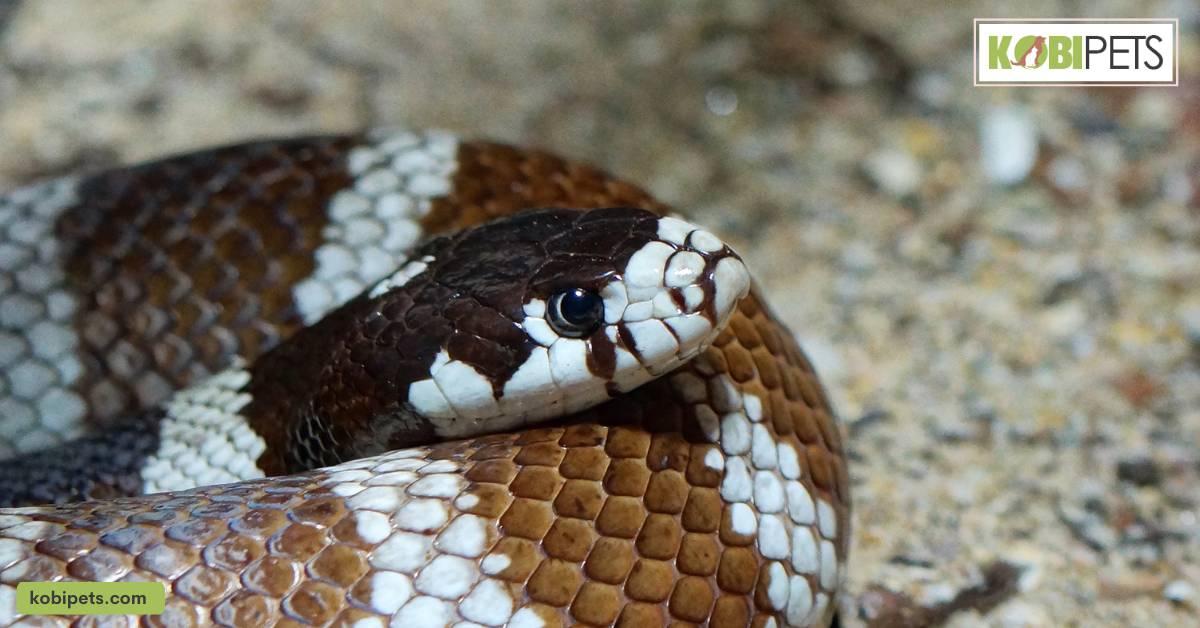
8. Rat Snake (Pantherophis Obsoletus)
Rat snakes are a popular choice for beginner pet snake owners because they are an incredibly hardy species that can tolerate less-than-perfect conditions and have relatively low maintenance needs.
They also tend to be more sociable and generally easier to handle than some other pet snake species since they thrive in natural settings and take well human interaction. With appropriate care, rat snakes usually live between seven and fifteen years, so a commitment of both time and energy is required to ensure their health and longevity.
Furthermore, they need an appropriately sized enclosure with appropriate temperatures and humidity levels, as well as enough space to move around in order to avoid health problems due to lack of exercise.
Behavior and Temperament
Rat snakes are an interesting species of reptile from a behavioral and temperament standpoint. While they can be quite docile and tolerant of human interaction, they may also become aggressive if mishandled or stressed.
Proper handling techniques and familiarity with their behavior will help to ensure a positive, stress-free experience for both the pet and its owner. Rat snakes prefer a cool and quiet environment, so light handling is ideal right before feeding time or during the nighttime when they feel most comfortable and alert.
It’s important to keep their living space minimal but secure; rat snakes need plenty of perching places or hiding spots that they can slither through throughout their enclosure to prevent them from feeling confined.
Caring Requirements
Rat snakes are incredibly diverse, with over 30 recognized species that all have varying but generally similar care requirements. They do best in an enclosure with a temperature range of 75-85°F and humidity that never exceeds 80%.
Regular bathing every 2-3 weeks is recommended to help keep the snake hydrated and its skin healthy. As they are primarily carnivores, rat snakes should be fed appropriately sized prey items twice or thrice a week — depending on how large your pet is — such as mice or insects to ensure they receive enough energy and nutrition.
In addition to these primary care needs, providing hiding areas and climbing apparatus in the habitat will provide stimulation and make it a more enjoyable home for the snake.
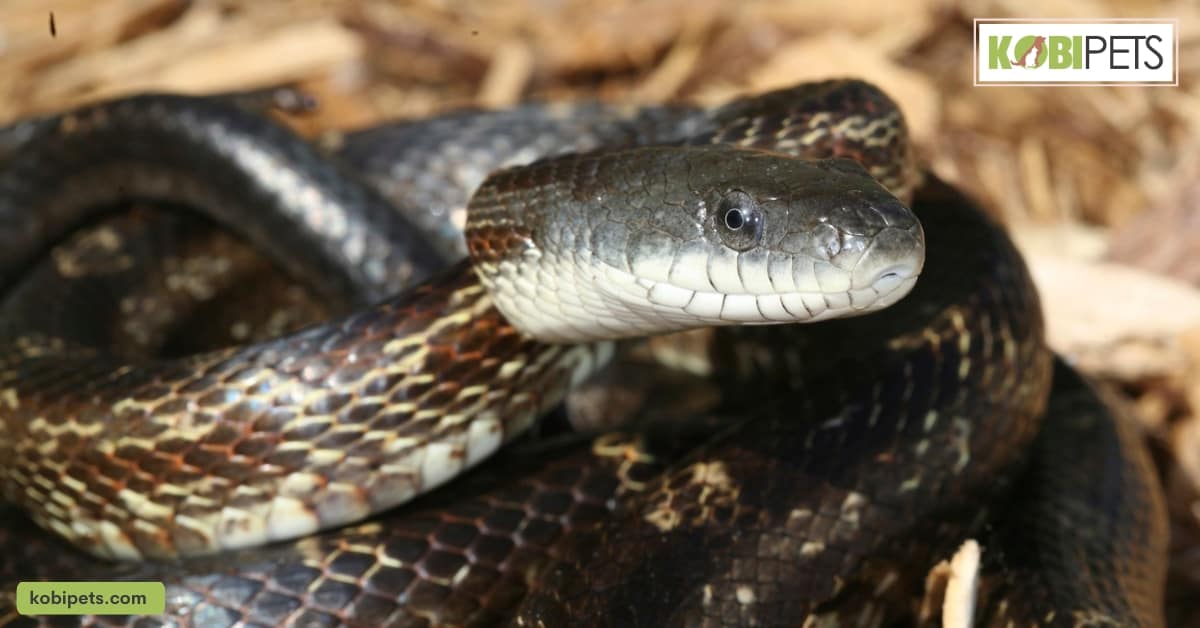
9. Kenyan Sand Boa (Eryx Colubrinus)
The Kenyan Sand Boa is an excellent reptile to consider as your first pet snake. It is a relatively small breed of African boa, typically growing around three feet long when fully matured. This makes them an ideal choice for those who don’t have much space in their home.
The Kenyan Sand Boa is popular amongst snake owners because they are gentle and docile, making them easy to handle and care for. They are also very low maintenance compared to other species; adults only need feeding once every 5-7 days.
Behavior and Temperament
Kenyan Sand Boas have a temperament that is generally calm and docile, which makes them ideal for first-time reptile owners. They may react to handling by hissing and musking, so it’s important to handle them softly with support from the beginning.
While Sand Boas are low maintenance in general, they do need an appropriate and warm habitat as well as regular food and monitoring for potential health issues. These snakes can also be found in captivity in almost any color or pattern—from albino to a reverse striped pattern—so there is something to suit any reptile enthusiast’s tastes.
Caring Requirements
They are relatively easy to care for, but they do require a few specific requirements in order to thrive. First and foremost, owners should ensure that their housing is escape-proof, as these small creatures are known diggers and can easily slide between any bars or grates.
Secondly, the temperature should be maintained at the correct levels; ideally in the 80°F during the day and dipping down into the upper 70°F at night. Lastly, these little serpents should be offered a container of clean water at all times; they don’t require a large body of water as they bathe by immersing themselves every few days.
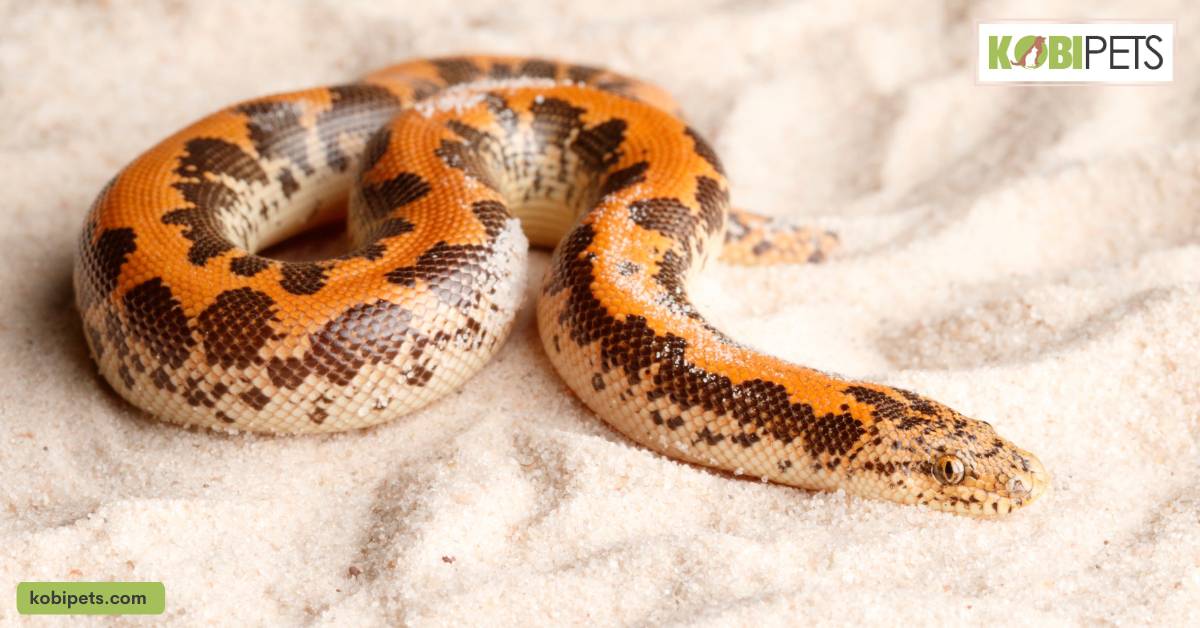
10. Green Anaconda (Eunectes Murinus)
The Green Anaconda is an excellent choice for a beginner pet snake. Growing up to 25 feet in length and its impressive girth (up to 200 lbs), the green anaconda is a majestic reptile that can easily become accustomed to captivity.
This species of snake is native to South America, making them relatively easy to care for within the confines of a terrarium; their natural climate should be kept fairly humid, encouraging wetter substrates such as moss or coco fiber.
Allowing these snakes to exercise their limbs and explore their cages by climbing branches or vines will also help encourage the natural behaviors they would perform while living in the wild. They have a very varied diet, accommodating rodents and fish depending on availability, which makes feeding time interesting and diverse.
Behavior and Temperament
Anacondas are some of the largest, longest, and heaviest extant snakes in existence. Their behavior and temperament are largely determined by their environment and individual personality.
An anaconda living in its natural environment of tropical rainforests and wetlands will display a more docile temperament than one living in captivity. In the wild, they can often be seen swimming through the murky water along with other reptiles and amphibians or relaxing on a branch – though they can become quite aggressive if threatened.
While in captivity, green anacondas tend to become accustomed to their owner’s presence over time and may even exhibit signs of recognition and affection towards them, such as raising their head when their owner enters the room.
Caring Requirements
Green anacondas must have adequate space since they can grow up to 15 feet long and can weigh up to 550 pounds. They prefer warmer temperatures, between 80 and 90°F, so providing them with sufficient heating is essential.
Humidity should also remain high, around 80%. A large water source such as a fish tank should be provided for swimming and soaking, as well as enough hiding spots like hides and logs where the snake can feel secure.
Since these reptiles are carnivorous, they need regular feeding with rodents like mice or rats. Lastly, scheduling routine vet visits is key to ensuring good health.
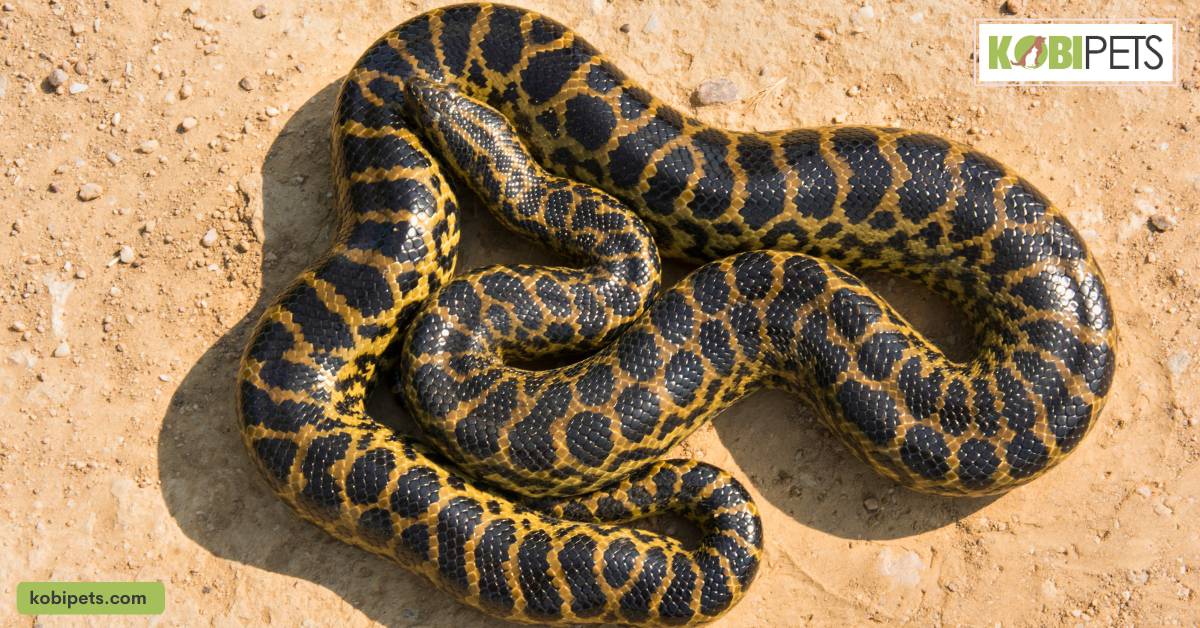
In Conclusion
There are several great beginner pet snake species available for those looking to take on the responsibility of owning a reptile. Each species has its own unique set of care requirements, so it’s important to research and understand what is needed in order to keep your pet happy and healthy.
Depending on your lifestyle, budget, and space constraints, one of these beginner-friendly snakes may be the perfect pet for you! With proper care and attention, you can be sure to enjoy years of companionship from your new reptile friend.






